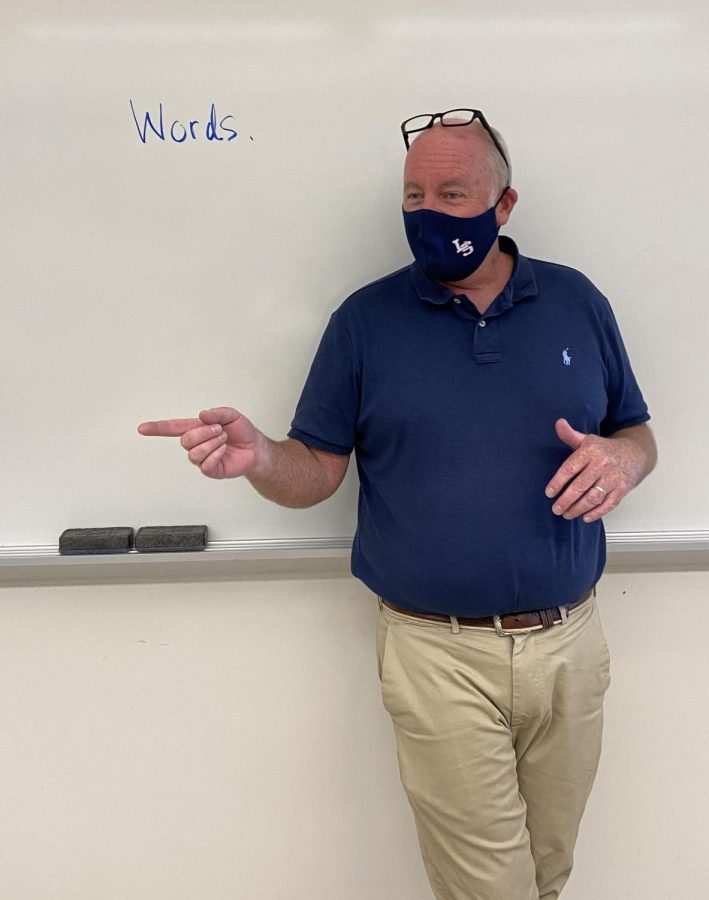Mr. Skelly’s Staff Reflection 2021
Party in the U.S.A.
I recently received an email from a senior regarding his final assignment in Mr. Lewis’s Literary Nonfiction class. Students were tasked with writing a nonfiction story, where they apply the nonfiction techniques and approaches they explored over the semester. His email sought permission to use my name, since he chose to write about his first day in my English 9 class four years ago.
I remember that day well, for it was not only the Class of 2021’s arrival at LS, it was also mine. I had changed careers two years prior at age 47, after a twenty-year stint in higher education marketing and communications: six at Harvard University, and fourteen at Berklee College of Music. I’d spent two years teaching at AMSA in Marlborough, a school I loved, but I aspired to teach in my hometown.
Now, here I was. Like the entering ninth graders, I was nervous and excited. How would it go? Would I make friends? What will it be like to teach my neighbor’s children? I figured the day would be a success if I didn’t end up the subject of a post on Sudbury Bulletin Board.
My former students are well aware of the prominent role music plays in my classroom, where I use songs to build skills of analysis and to introduce important themes and ideas. Before reading British Romantic poetry, we dive into John Denver’s “Rocky Mountain High” and its glorification of nature via religious imagery. Prior to reading Fahrenheit 451, we analyze Rush’s “Subdivisions” for what it says about the benefits and challenges of life in the suburbs. Ahead of experiencing the loneliness of characters in Of Mice and Men, we explore the lyrics and music of the Beatles’ “Eleanor Rigby” for how both support its themes. And of course, there’s the pure joy of Funky Fridays where, for the last ten minutes of each week, one student plays ten songs related to class content, and classmates have to guess the songs, artists, and theme.
So what did I select for my first lesson plan? Wanting to set the bar high from the start, I chose the canonical text “Party in the U.S.A.” Initially written by Jessie J, Dr. Luke, and Berklee alum Claude Kelly, Jessie J took a pass on recording the song, feeling it didn’t fit her brand. Miley Cyrus then tweaked the song to illustrate her move from Nashville to L.A., from child star to young woman. That day back in 2017, the students identify the theme pretty quickly: the joys and challenges of transitioning from one place to another. They spot a few symbols that relate to the theme, like the cardigan signifying home and comfort. They notice the tonal shift of the bridge, where the music becomes dreamy and ethereal as the speaker considers retreat into the safety of the known, only to be rejuvenated by hearing the music that grounds her. Then we come to motifs, a sometimes difficult concept for students to understand. I define this for the class: similar to symbols, these are recurring patterns that support a theme. “So what motif examples do you see in this song?”
Crickets. After an excruciating wait time, one student meekly offers “…planes?” I ask why, and she says they’re about movement and transition from one place to another. Another student adds “Cabs?” Then the class starts humming, offering more confident responses, lacking the rising lilt of a question mark. They notice motions (“hopped,” “jumped,” “moving”) including some that indicate emotion (the nervousness of “tummy’s turnin,’” the positivity of “nodding”). They notice those “kicks” and “stilettos,” and point out that the speaker is simultaneously out of their usual environment, but also staying true to who they are. The students are warming up, relaxing, and getting more vocal. It seems their butterflies are flying away. As are mine.
The student who wrote about that day had come from outside Sudbury. Upon arriving at L-S, he “felt completely alone and timid,” as if “people were looking at me, even though they weren’t.” But he recognized the song as being “about coming to a new environment and feeling out of place” and realized that “it’s how you carry yourself through those times that define who you are.” He introduced himself to three boys in the back row, who are now among his best friends. He felt comfortable.
So as the Class of 2021 (and its parents) prepare to embark on this next transition, follow Miley’s advice. Revel in that nervous anticipation: those turnin’ tummies, signaling the excitement and possibility of the new and the unknown. Realize that you are about to make friends for life. Cherish your past: those experiences and memories you take from L-S. Bring a cardigan, or whatever else provides comfort. Throughout the process, seek beauty and meaning in unlikely places, and notice the details and the big themes and patterns. And be kind to yourself and others, knowing that everyone is going through their own transitions in their own way.
And, most importantly, play your song, and know you’re gonna be OK.






